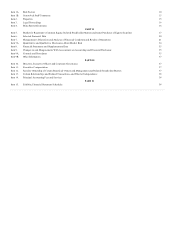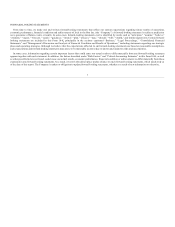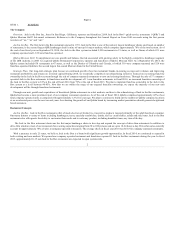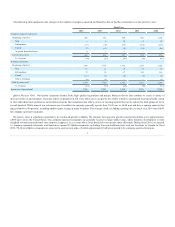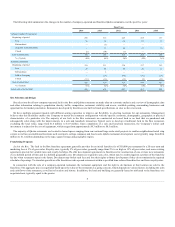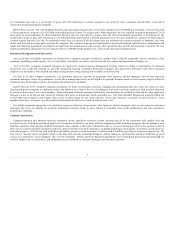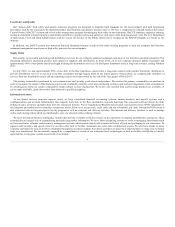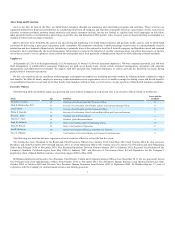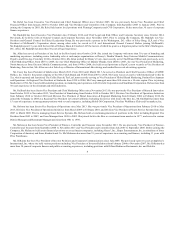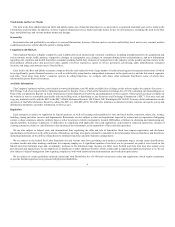Jack In The Box 2014 Annual Report Download - page 12
Download and view the complete annual report
Please find page 12 of the 2014 Jack In The Box annual report below. You can navigate through the pages in the report by either clicking on the pages listed below, or by using the keyword search tool below to find specific information within the annual report.
We are also subject to various federal, state and local laws regulating the discharge of materials into the environment. The cost of complying with these
laws increases the cost of operating existing restaurants and developing new restaurants. Additional costs relate primarily to the necessity of obtaining more
land, landscaping, storm drainage control and the cost of more expensive equipment necessary to decrease the amount of effluent emitted into the air, ground
and surface waters.
Some of our Qdoba restaurants sell alcoholic beverages, which require licensing. The regulations governing licensing may impose requirements on
licensees including minimum age of employees, hours of operation, and advertising and handling of alcoholic beverages. The failure of a Qdoba restaurant to
obtain or retain a license could adversely affect the store’s results of operations.
We have processes in place to monitor compliance with applicable laws and regulations governing our operations.
ITEM 1A. RISK FACTORS
We caution you that our business and operations are subject to a number of risks and uncertainties. The factors listed below are important factors that
could cause our actual results to differ materially from our historical results and from projections in the forward-looking statements contained in this report, in
our other filings with the SEC, in our news releases and in oral statements by our representatives. However, other factors that we do not anticipate or that we
do not consider significant based on currently available information may also have an adverse effect on our results.
Risks Related to the Food Service Industry. Food service businesses such as ours may be materially and adversely affected by changes in consumer
preferences, national and regional economic, political and socioeconomic conditions, attitudes and changes in consumer dining habits, whether based on
new information regarding diet, nutrition or health, on the cost of food at home compared to food away from home, or health-based regulations or on other
factors. Adverse economic conditions, such as higher levels of unemployment, lower levels of consumer confidence and decreased discretionary spending
may reduce restaurant traffic and sales and impose practical limits on pricing. If adverse or uncertain economic conditions persist for an extended period of
time, consumers may make long-lasting changes to their spending behavior. The impact of these factors may be exacerbated by the geographic profile of our
Jack in the Box segment. Specifically, nearly 70% of the restaurants in our Jack in the Box system are located in the states of California and Texas. Economic
conditions, state and local laws, government regulations, weather conditions or natural disasters affecting those states may therefore more greatly impact our
results than would similar occurrences in other locations.
The performance of our business may also be adversely affected by factors such as:
• seasonal sales fluctuations;
• severe weather and other natural disasters;
• unfavorable trends or developments concerning operating costs such as inflation, increased costs of food, fuel, utilities, technology, labor (including
due to legislated minimum wage increases, labor disruptions or employee relations issues), insurance, or employee benefits (including healthcare,
workers’ compensation and other insurance costs and premiums);
• the impact of initiatives by competitors and increased competition generally;
• lack of customer acceptance of new menu items, service initiatives or potential price increases necessary to cover higher input costs;
• customers trading down to lower priced items and/or shifting to competitive offerings with lower priced products;
• the availability of qualified, experienced management and hourly employees; and
• failure to anticipate or respond quickly to relevant market trends or to implement successful advertising and marketing programs.
In addition, if economic conditions deteriorate or are uncertain for a prolonged period of time, or if our operating results decline unexpectedly, we may be
required to record impairment charges, which will negatively impact our results of operations for the periods in which they are recorded. Due to the foregoing
or other factors, results for any one quarter are not necessarily indicative of results to be expected for any other quarter or for a full fiscal year. These
fluctuations may cause our operating results to be below expectations of public market analysts and investors, and may adversely impact our stock price.
Risks Related to Food and Commodity Costs. We and our franchisees are subject to volatility in food and commodity costs and availability. Accordingly,
our profitability depends in part on our ability to anticipate and react to changes in food costs and availability, including changes in fuel costs and other
supply and distribution costs. For example, prices for feed ingredients used to produce beef, chicken and pork could be adversely affected by changes in
worldwide supply and demand or by regulatory mandates, leading to higher prices. Further, increases in fuel prices could result in increased distribution
costs. In recent years, food and commodity costs increased significantly, out-pacing general inflation and industry expectations. Looking forward, we
anticipate volatile or uncertain price conditions to continue.
10


